22 photos that show the evolution of New York City's Time Square ball drop
Around a million people are expected to fill Times Square to ring in 2018.

After midnight on New Year's, the Department of Sanitation performs massive cleanups to clear the confetti and other debris. In 2014, 190 workers cleared over 50 tons of trash from Times Square.
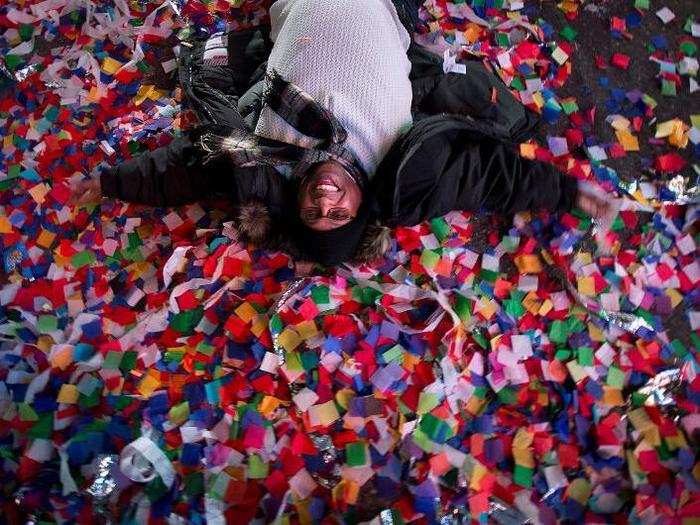
Source: CBS
Rainbow confetti drops at midnight along with the ball.
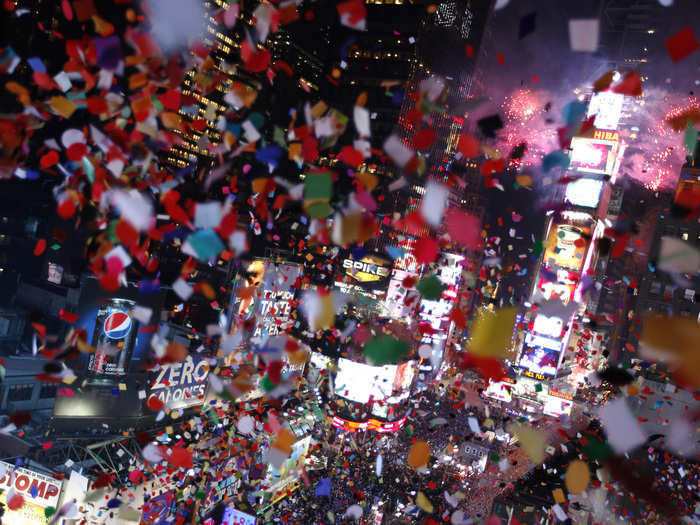
The nearly 12,000-pound crystal contraption now includes more than 32,000 lights that emit billions of kaleidoscopic color patterns.
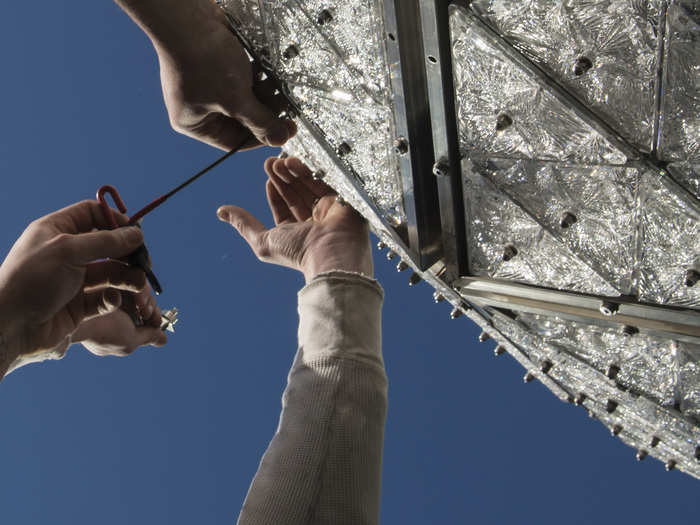
After Times Square became a car-free space, even more people were able to crowd into the streets beneath the New Year's ball.
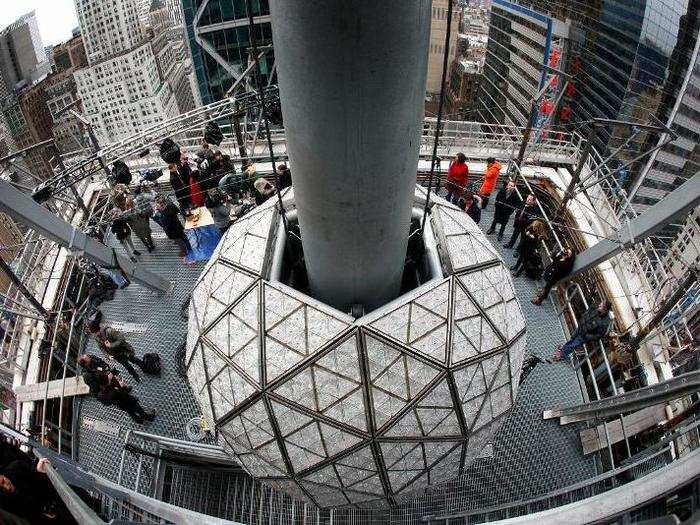
In 2008, NYC banned cars from Times Square. Pedicabs began driving the ball's numeral fixtures instead.
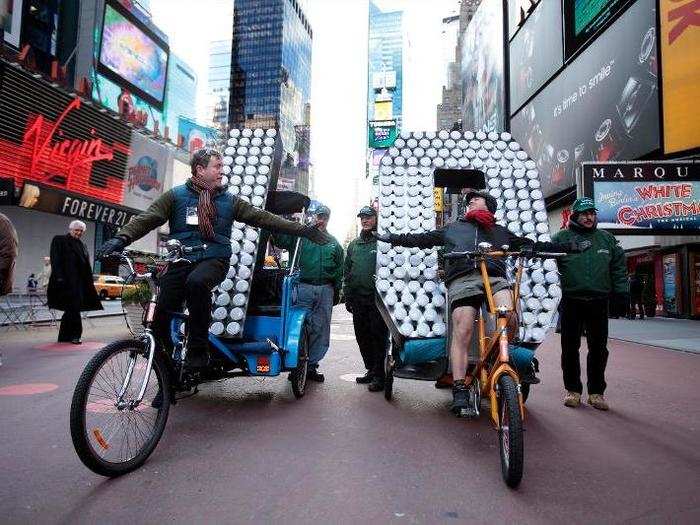
The 2009 ball was outfitted with 32,256 LEDs — more energy-efficient bulbs.
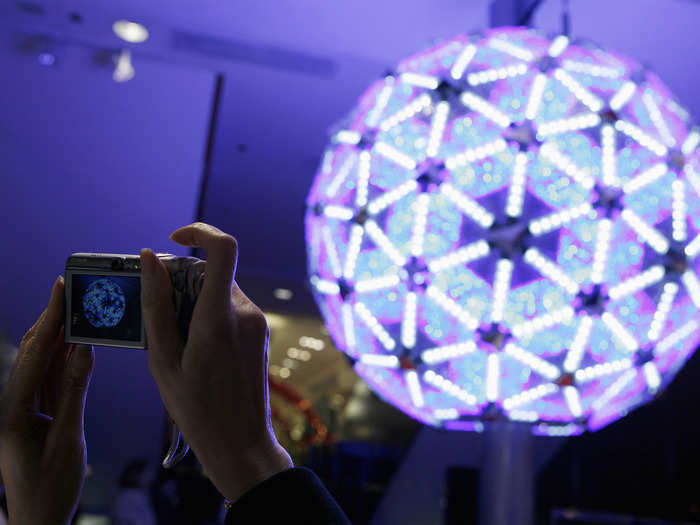
Over time, the ball became more intricate in design and larger in size. In the 2003 photo below, workers tested the 1,070-pound crystal ball that hovered 400 feet above Times Square.
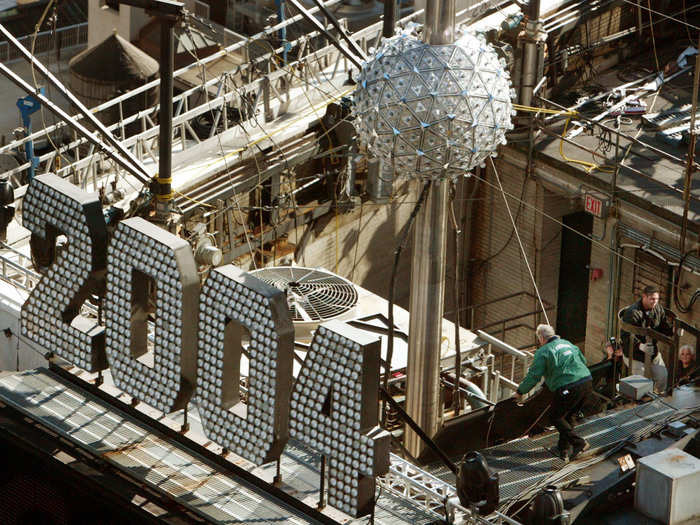
Around 500,000 people watched the ball drop that marked the beginning of 2002.
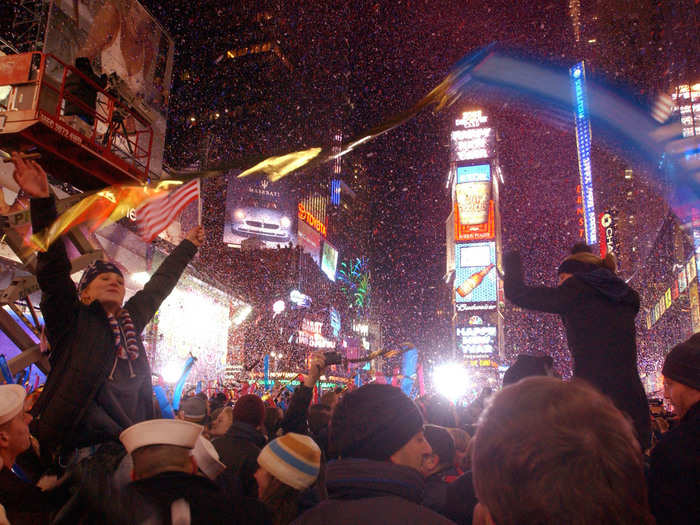
Following the September 11th attacks in 2001, the police department tightened security in Times Square even more. Bomb-sniffing dogs and 7,000 officers with handheld metal detectors were on duty.
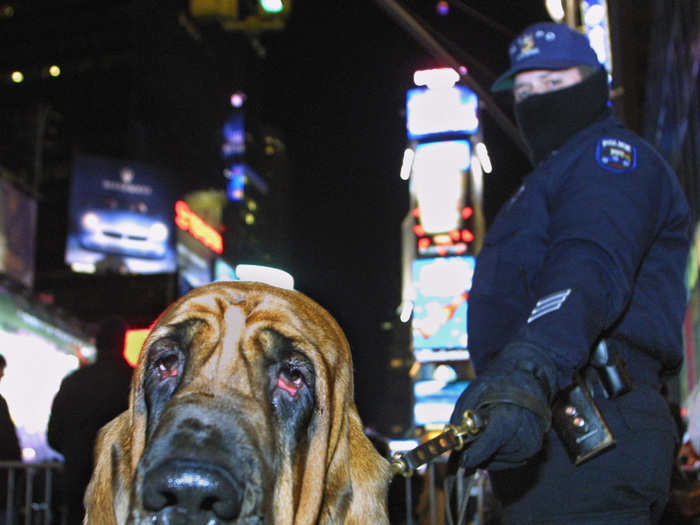
In 1995, the ball was upgraded with rhinestones, strobes, and computer controls.
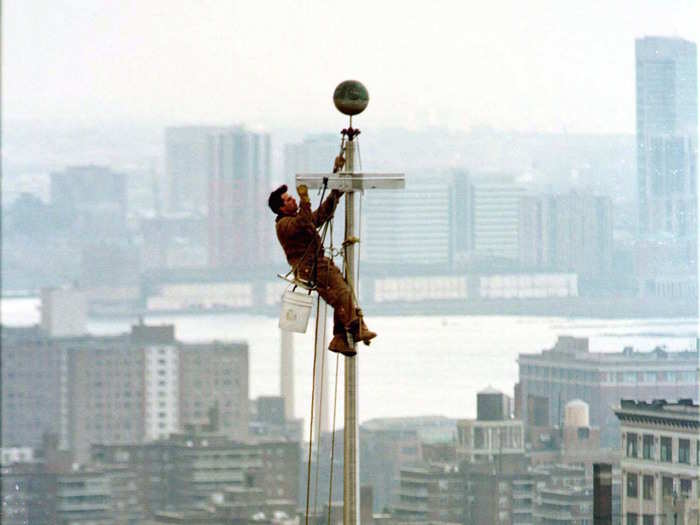
In the 1990s, special guests started activating the ball. The first was philanthropist Oseola McCarty, later followed by Muhammed Ali, Mary Ann Hopkins from Doctors Without Borders, Lady Gaga, and others.
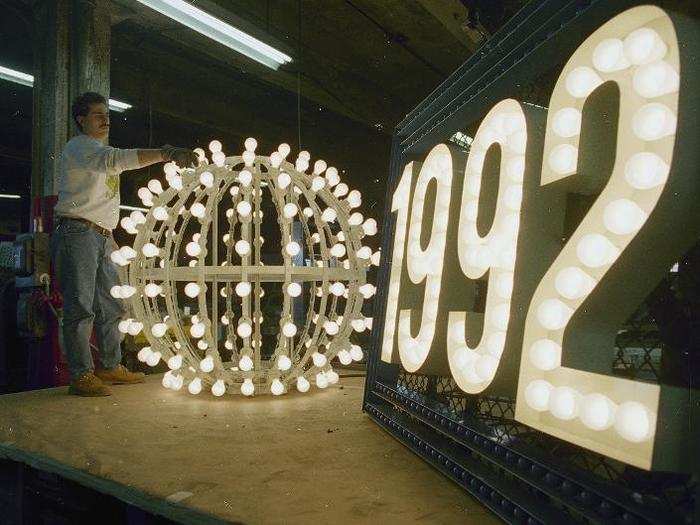
Source: The City of New York
In 1988, the ball organizers added a one-second light show at midnight. It took 60 seconds to drop.
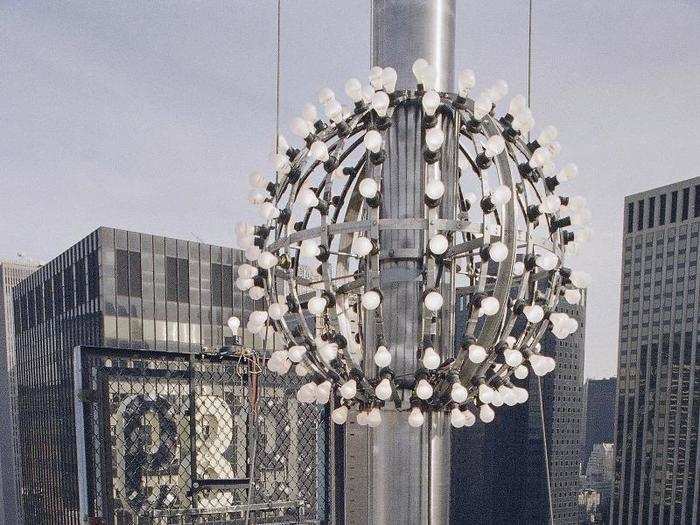
Source: The New York Times
In 1982, four bombs exploded at government buildings in NYC on New Year's Eve. The next year, the city bought a series of $20,000 robots that could handle bombs, wield shotguns, and drag fallen officers out of danger. They monitored 1983's celebration.
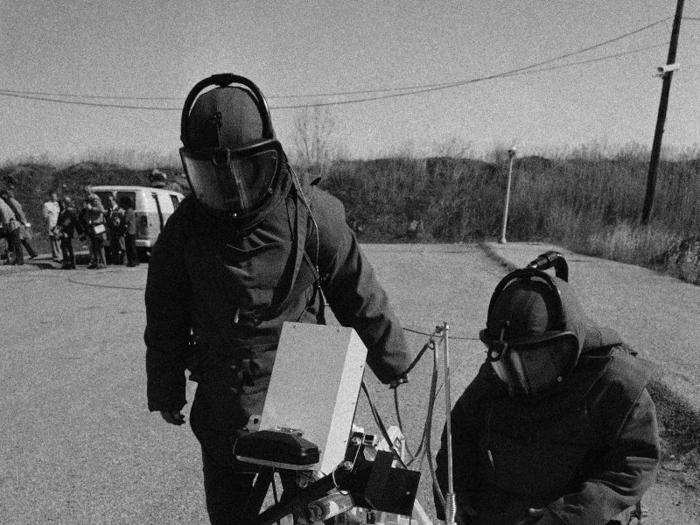
In honor of the "I Love New York" campaign, the 1981 New Year's ball included red lights and a green "stem" to make it look like an apple.
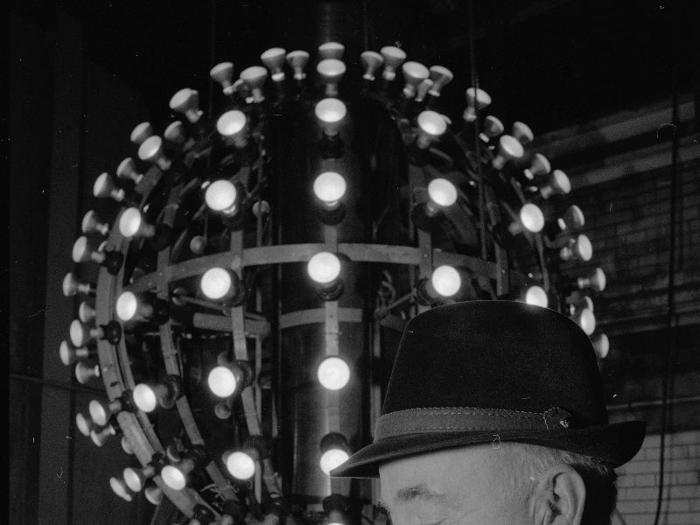
That was also the final year Russ Brown, superintendent of One Times Square, managed the ball dropping after 16 years.
In 1955, a new ball made partially of aluminum was introduced. The city used it until 1998 — though it was renovated several times over that period.
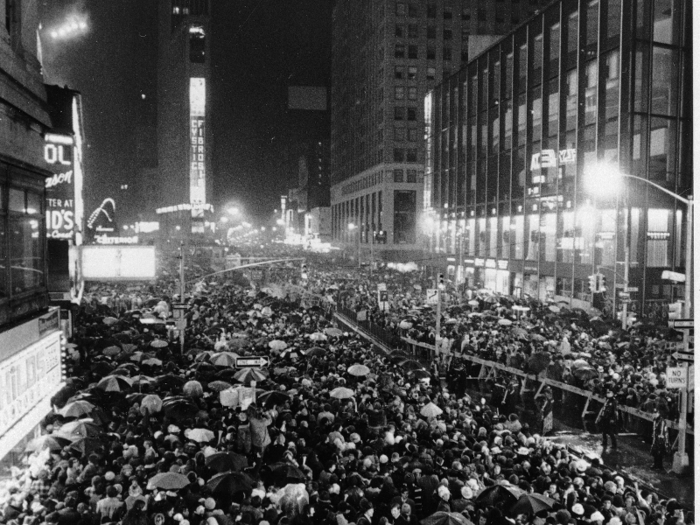
In 1978, the ball was revamped to feature halogen lamps, which shone brighter than the previous incandescent bulbs.
Source: The New York Times
As televisions became more mainstream in the 1960s, people began tuning in to watch the city's celebration. In 1963, some 3,000 people danced in Grand Central Terminal and watched the Times Square spectacle — just across town — on a giant TV.
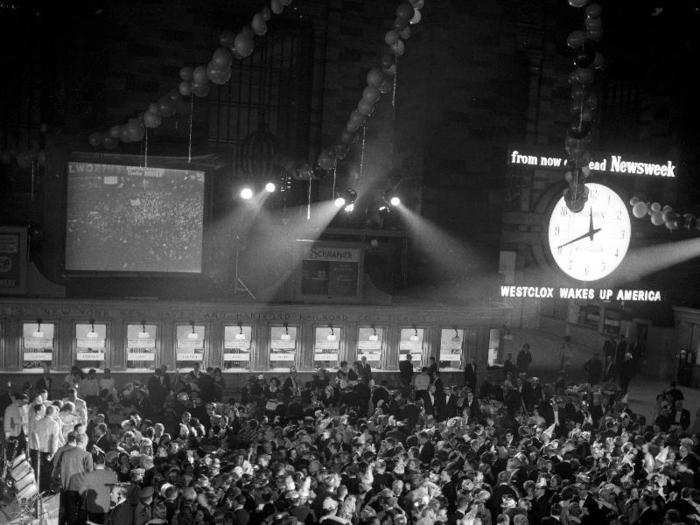
Nevertheless, an estimated half million turned out to Times Square in 1942. At midnight, there was a moment of silence and then a ringing of church bells.
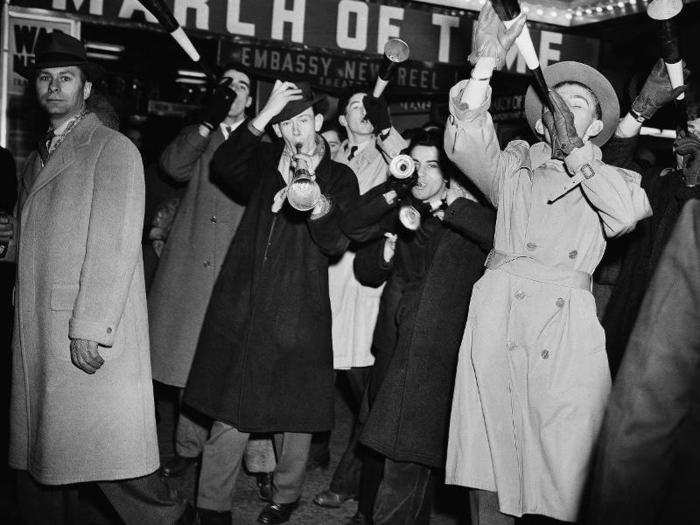
With the start of WWII, the fire department started ramping up security. Due to wartime blackouts, 1942 and 1943 were the only two years without ball drops.
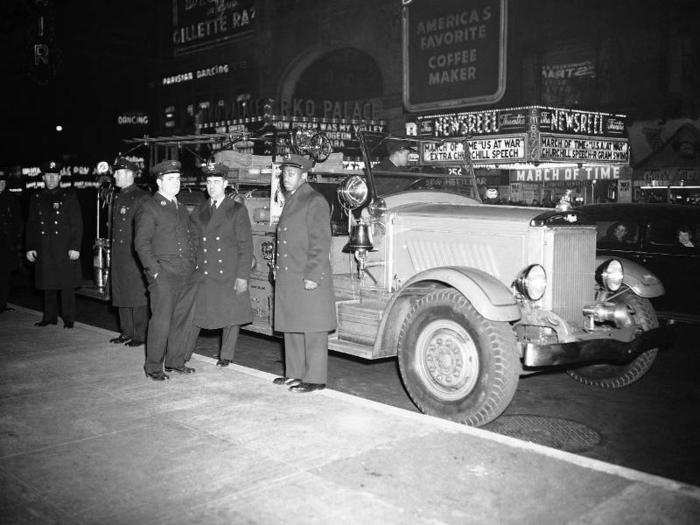
Over the next few decades, the number of spectators swelled. This was the crowd on December 31, 1941.
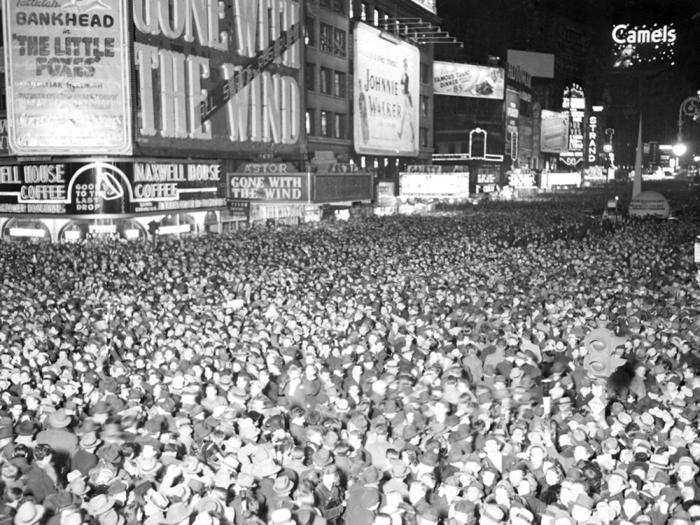
NYC had its first ball drop in 1907 after the city banned fireworks. The 700-pound ball had 100 bulbs, was made of iron and wood, and appeared every year until 1920.
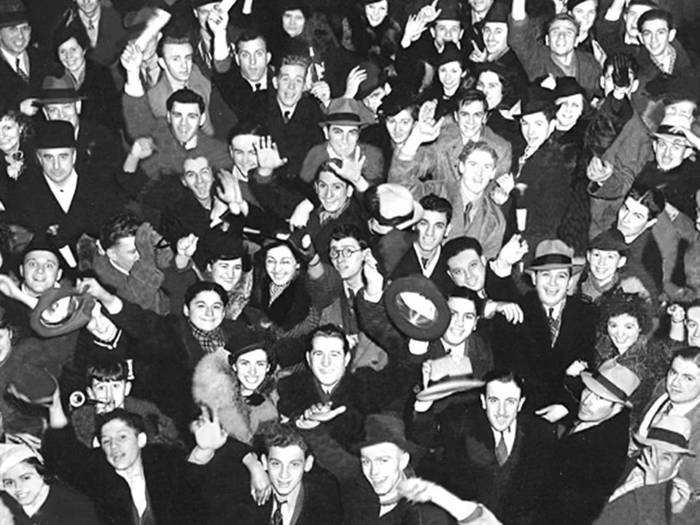
Source: The New Yorker
Since the tradition began in 1904, NYC's New Year's Eve celebration has been one of the world's largest. The first celebration had about 200,000 attendees.
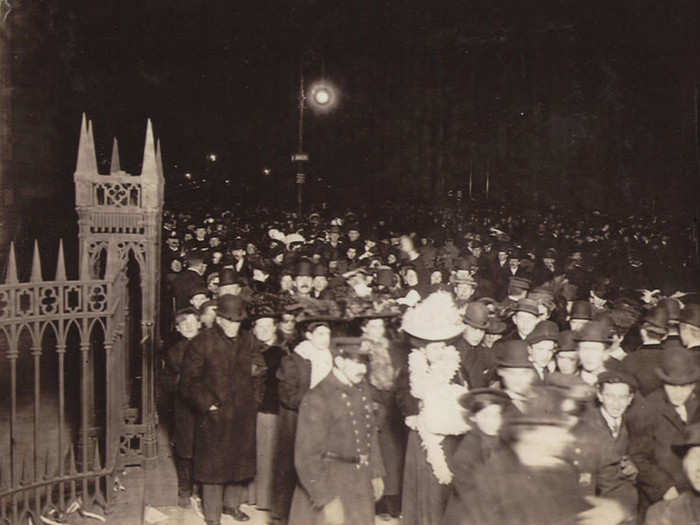
In the early years, crowds gathered at Wall Street's Trinity Church to listen to church bells at midnight before the Times Square festivity became more popular.
Popular Right Now
Advertisement